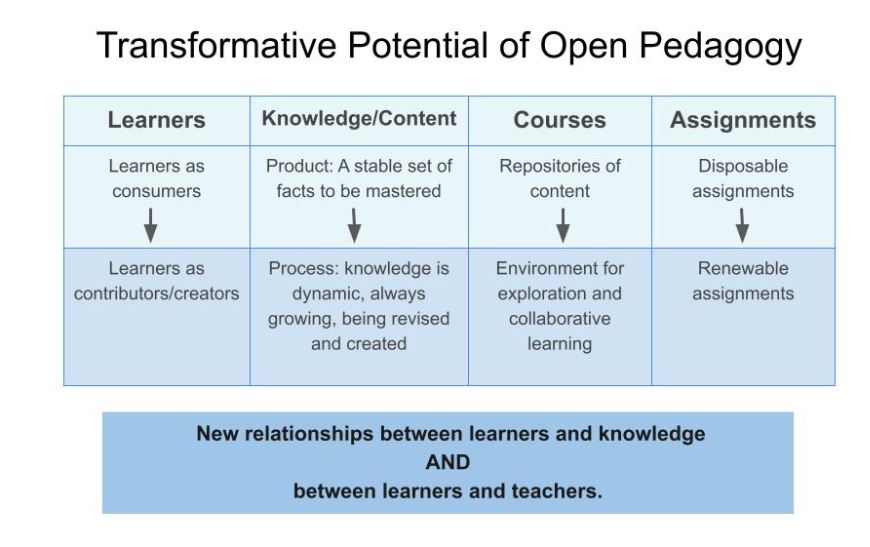13 Transformative Potential of OER
https://express.adobe.com/video/eEZm0Zs4V2Vpx/embed
Transcript – Transformative Potential of OERs
This section of the OER Design Incubator will focus on looking for opportunities to co-create OER content with your students.
There are many different ways you can incorporate OERs into your courses. Many of us start by adopting free resources, or using OERs as products. This is an amazing place to start. It saves our students money and provides more equitable access to learning materials. The shift to adapting and creating OER content allows us to offer customized, meaningful, relevant resources that represent multiple voices and perspectives. The impact of this approach is immeasurable.

The first two layers represent situations where the faculty member is making choices about content and that information flows to your learners; and again, in many cases this is fantastic! I have included an image of an iceberg, and these two approaches are represented by the top of the iceberg, the beautiful part we can see, and the part just beneath the surface.
I now want to take you down to the deep, powerful and often invisible part of the iceberg… but the part that has the potential to be transformative! This part of the iceberg represents the potential of inviting your students to join you in the co-creation of OER content, as an active process in your course.
Robin DeRosa and Scott Robison beautifully stated the following:
So let’s recognize the shift. It’s not just a shift in the resources we are using….it’s a shift in the relationships between learners, knowledge, and teachers. This last quote really sums it up in such a powerful way:

What I have here is a chart with a first row that outlines a more traditional view of learners, knowledge and courses, and then the chart identifies the shift that can happen when open pedagogy comes into play. These concepts are largely attributed to David Wiley and Tony Bates (Teaching in a Digital Age – Second Edition by Tony Bates is licensed under CC BY-NC).
Let’s start here in two the left-hand columns….open pedagogy is the practice of engaging with students as creators of information rather than simply consumers of it. It’s a form of experiential learning where students demonstrate understanding through the act of creation.
Moving over to the second column, instead of thinking of knowledge as something students need to download into their brains, we start thinking of knowledge as something continuously created, critiqued and revised. Knowledge is less a product that has a distinct beginning and end point and is instead a process in which students can engage, ideally beyond the bounds of the course.
This actually means that teachers and students become learners together, and content becomes a dynamic, always changing category with which we engage rather than a stable set of facts to be mastered. So, our courses can evolve into environments for exploration and collaborative learning rather than simply repositories of content. This also involves challenging classroom hierarchies and inviting students to become part of the teaching process.
Another shift involves assessments shifting from disposable to renewable – where the products of open pedagogy are student-created and openly licensed so that they may live outside of the classroom in a way that has an impact on the greater community.
This shift towards open pedagogy allows us to truly maximize the potential of OERs and provides an opportunity to try some new and exciting approaches with our learners.
References
Camilleri and Ehlers, 2011. Mainstreaming Open Educational Practice, Recommendations for Policy. OPAL Consortium

